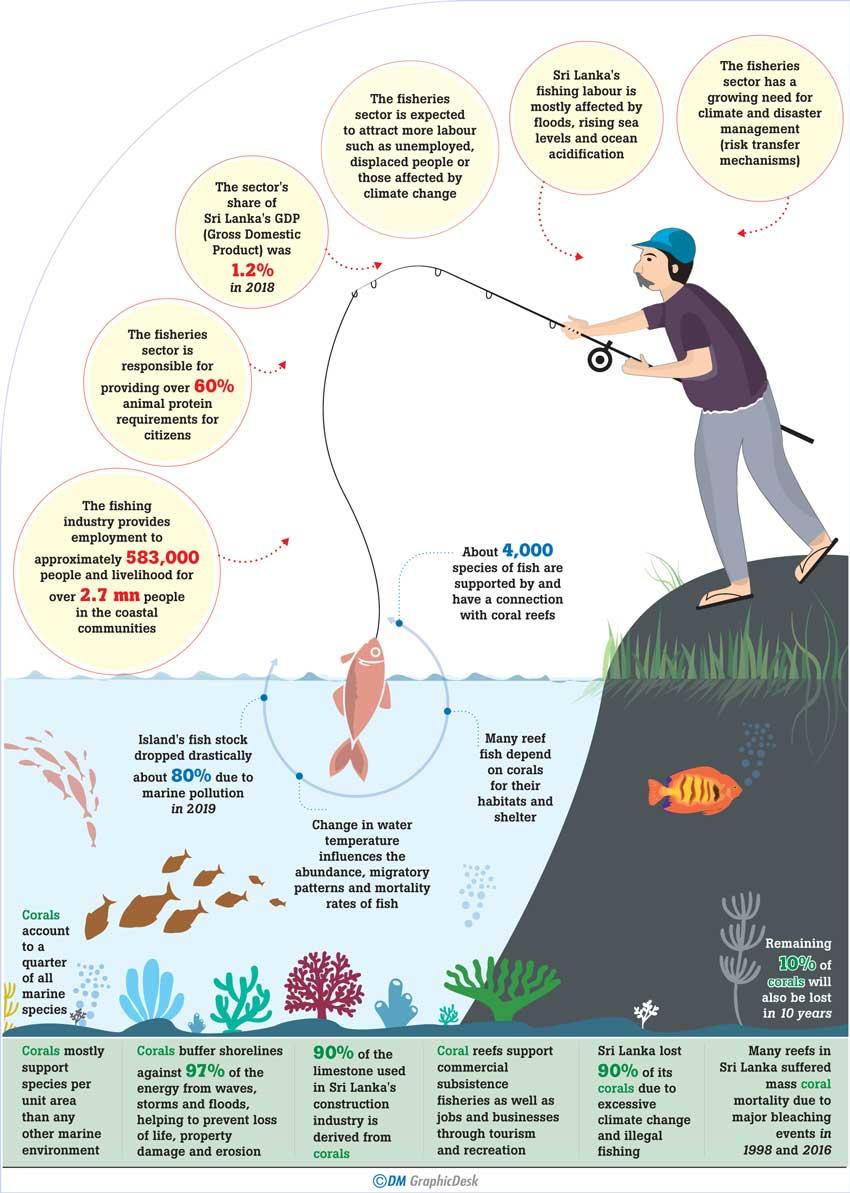Reply To:
Name - Reply Comment

How rising sea temperatures are affecting our seas and our livelihoods
 When it comes to a healthy ocean ecosystem, coral reefs are vital in providing habitats and shelter for many marine organisms. As a source of nitrogen and other essential nutrition for marine food chains, healthy coral reefs support commercial and subsistence fisheries as well as jobs and businesses through tourism and recreation. However, despite the immense economic and recreational value that these coral reefs offer, they are severely threatened by pollution, disease and habitat destruction.
When it comes to a healthy ocean ecosystem, coral reefs are vital in providing habitats and shelter for many marine organisms. As a source of nitrogen and other essential nutrition for marine food chains, healthy coral reefs support commercial and subsistence fisheries as well as jobs and businesses through tourism and recreation. However, despite the immense economic and recreational value that these coral reefs offer, they are severely threatened by pollution, disease and habitat destruction.
Daily Mirror looked into how these different aspects of the marine ecosystem co-exist and depend on each other and their importance on human life.
Arjan Rajasuriya, coordinator, coastal and marine programme, IUCN Sri Lanka notes that there are several varieties of fish which have a connection with these coral reefs, playing a vital role to the preservation of coral reefs. But corals for some time now have been under threat.
There are several varieties of fish which have a connection with these coral reefs, playing a vital role to the preservation of coral reefs. But corals for some time now have been under threat
Despite the recent economic turmoil, the fisheries sector is expected to continue to attract more labour such as unemployed or displaced persons or those whose traditional livelihoods have been impacted by climate change
The largest threats we are facing now are weather and climate threats, he said. Here, a change in the temperature occurs and with climate change and the increase in the sea surface temperature, Rajasuriya explains corals in the shallow water are most vulnerable.
In these corals, there is a symbiosis with a single cell algae. The corals need these algae to build their structure and when the temperature rises, this symbiosis breaks. The coral being secures 90% of its food from the glucose that these algae produce. Therefore they lose food and their colour as well. This colour has great benefits since it has a sunscreening ability which protects them from ultraviolet rays. Ultimately, this leads to lack of food and protection and the corals become pale. This is known as bleaching and these corals won’t survive for too long in this condition. Rajasuriya explained that this happens not only in one place but throughout a wide area and it affects other species of marine life as well.
The fisheries connection
In 2017, a series of events in the national and international fisheries landscape resulted in a positive outlook for Sri Lanka’s fisheries sector in the long-term.
One such event was the European Union (EU) granting Sri Lanka better access to the EU for its exports through the EU’s Generalised Scheme of Preferences Plus (GSP+), thereby boosting the economy and reviving the fishing industry in the Eastern and Northern regions of Sri Lanka.
Despite the recent economic turmoil, the fisheries sector is expected to continue to attract more labour such as unemployed or displaced persons or those whose traditional livelihoods have been impacted by climate change.
The increase in Sri Lanka’s fisheries labour force means that a greater number of livelihoods will be affected by the increase in frequency and severity of natural hazards and rapid and slow onset events. This includes floods, rising sea levels, and ocean acidification as a direct result of climate change. Consequently, there is a growing need for climate and disaster risk management such as risk transfer mechanisms to reduce and adapt to the impacts of climate change.